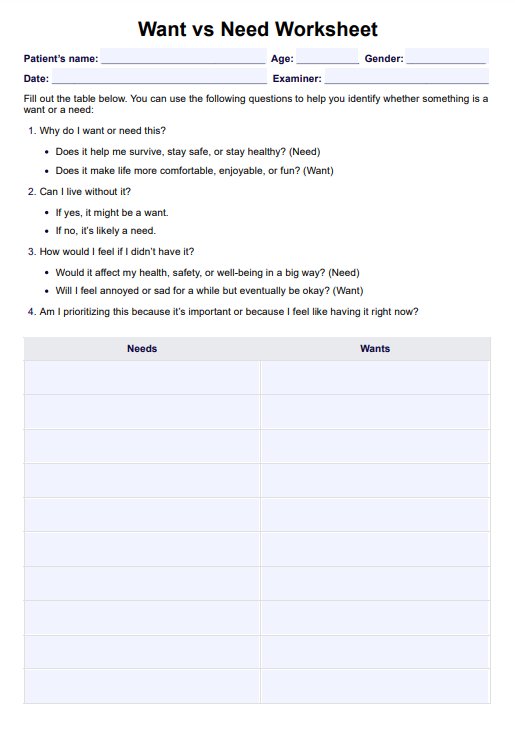A need is something essential for survival or well-being, such as food, shelter, or clothing. A want is something that enhances comfort or enjoyment, like a new video game, designer shoes, or a vacation.

Want vs. Need Worksheet
Help clients differentiate priorities with our Wants vs Needs Worksheet. Use our template to help them make informed decisions for a balanced life.
Want vs. Need Worksheet Template
Commonly asked questions
To decide, ask yourself key questions: "Can I live without it?" "Does it support my health, safety, or well-being?" Needs address essentials for survival, while wants to provide temporary satisfaction and can often wait.
Start by using relatable examples and asking questions like, "Why do you want this?" and "Do you need it to stay safe or healthy?" Worksheets, like the Want vs. Need Worksheet, and real-life scenarios are great financial literacy activities for teaching this concept to children and adults.
EHR and practice management software
Get started for free
*No credit card required
Free
$0/usd
Unlimited clients
Telehealth
1GB of storage
Client portal text
Automated billing and online payments











